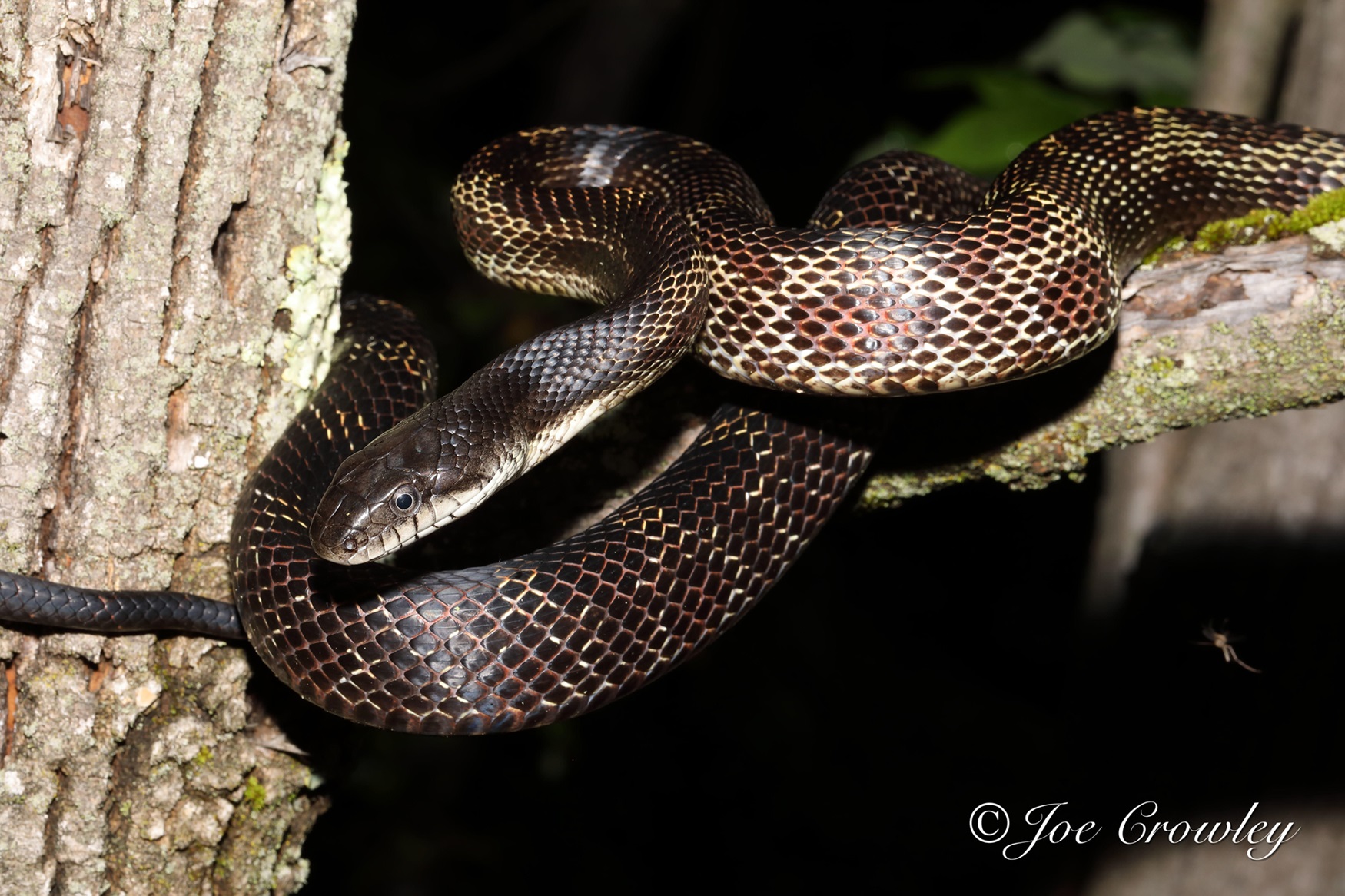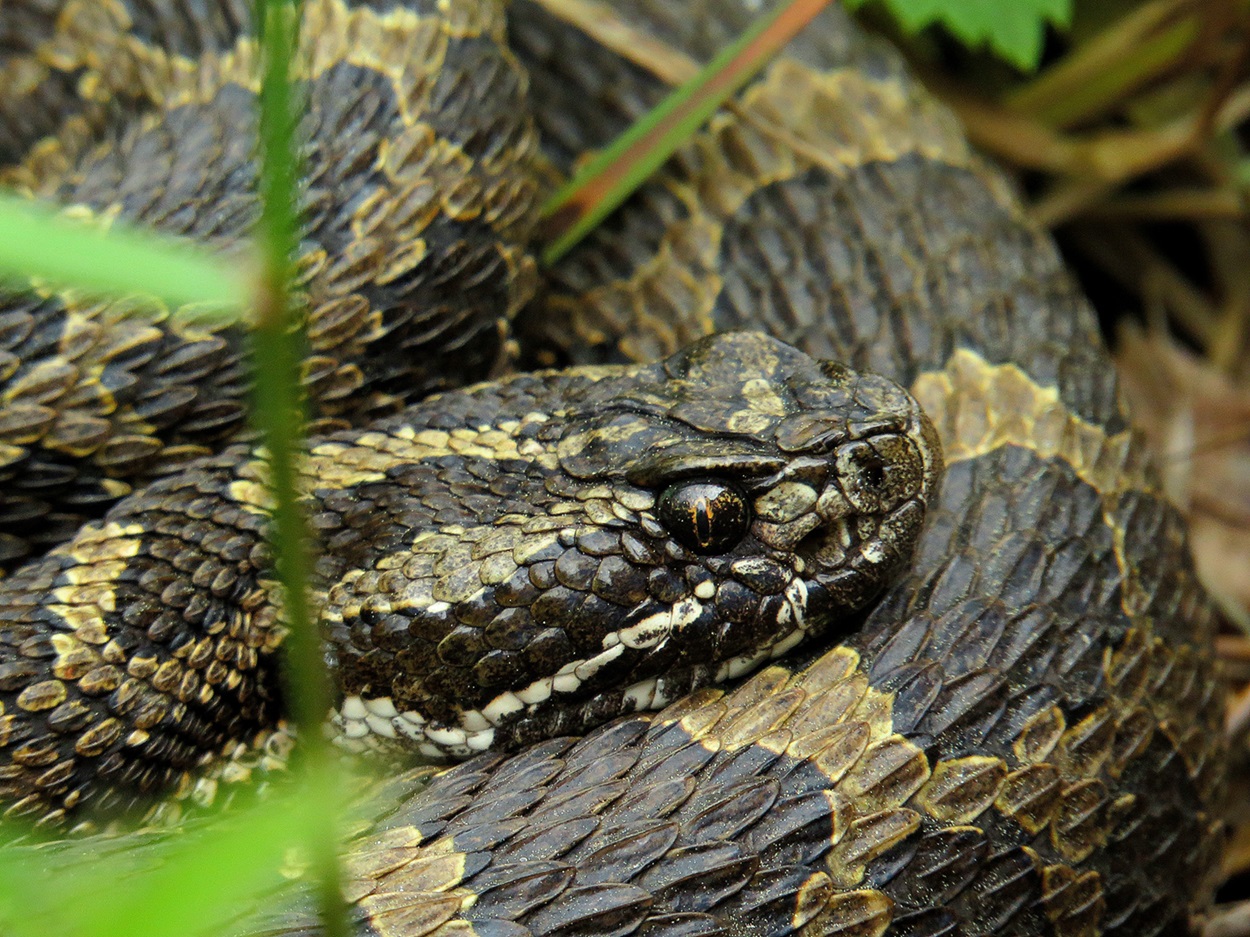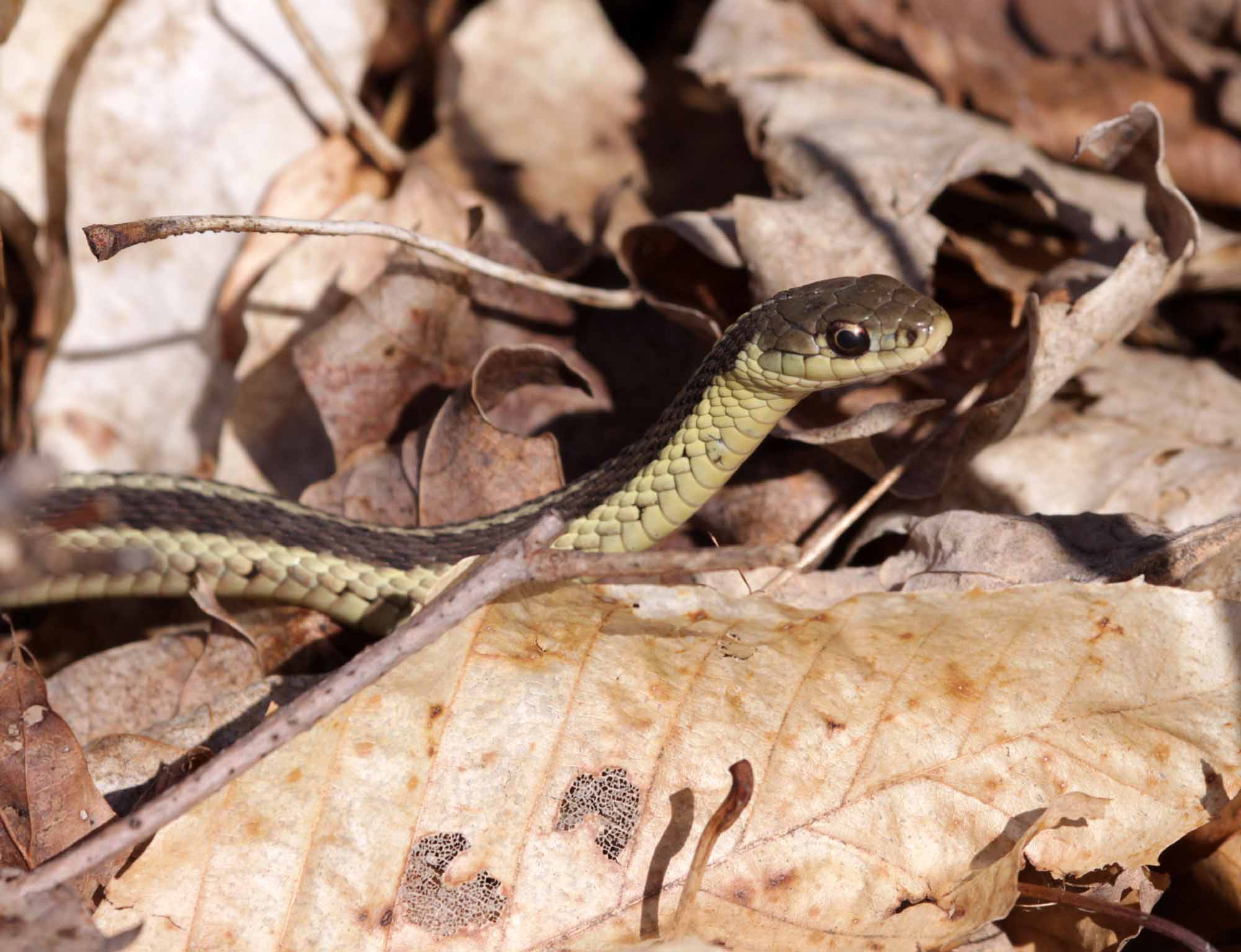The gray ratsnake (Pantherophis spiloides) is a non-venomous snake native to eastern North America. It is one of the largest snake species in North America. In Canada, the gray ratsnake is only found in southern Ontario, where it is restricted to two disjunct regions. Canadian populations are declining due to a variety of threats, including road mortality, habitat loss and intentional persecution by people. It is classified as a species at risk under Canada’s Species at Risk Act.

Description
Gray ratsnakes can grow to over 2.5 m in length, although most individuals are much smaller than this. Young individuals are light grey with prominent dark brown to black blotches on the sides and back. They lose this patterning and become darker as they age. Older adults are almost uniformly black on the sides and back, although they often retain faint light-coloured patterning or flecking between the scales. The chin and throat are white to cream coloured. The belly is white to yellowish cream in colour with dark rectangular markings resembling a checkerboard pattern. Gray ratsnakes have an angular head that widens towards the back, a distinct neck and round pupils. The sides of the body are straight and meet the belly at a right angle. The scales on the back are weakly keeled, meaning there is a slightly raised central ridge running down the centre of each scale. The scales along the lower sides of the body often lack keels and are smooth.

Distribution and Habitat
In Canada, the gray ratsnake is only found in southern Ontario. Their distribution is restricted to parts of the Carolinian zone in southwestern Ontario and around the Frontenac Arch (a southeastern extension of the Canadian Shield) in eastern Ontario. In the United States, the gray ratsnake’s distribution extends from New York state west to Wisconsin and south to the Florida panhandle, Alabama, Mississippi and Louisiana.
Gray ratsnakes are generally associated with forests and woodlands throughout their North American range. However, in Canada’s cooler climate, they also require open-canopy habitats for basking (warming up in the sun), such as forest clearings and edges, old fields or rocky outcroppings. Because of this, gray ratsnakes are often found near forest edges, where they can easily move between forested and open-canopy habitats. Within these habitats, individuals rely on logs, hollow trees and stumps, rocks, low-lying vegetation or other habitat features to provide shelter from predators and to avoid extreme temperatures. Females typically lay their eggs in rotting logs and stumps, hollow trees or leaf and compost piles.
During the winter, gray ratsnakes hibernate underground in rock crevices, mammal burrows or other features that allow them to get below the frost line. In eastern Ontario, hibernation sites are often located in south-facing rocky slopes in forested areas. Because suitable hibernation sites are sometimes limited on the landscape, gray ratsnakes often hibernate communally in large groups of up to 60 individuals.
Gray ratsnakes have large home ranges, and individuals may travel up to 4 km between their hibernation site and summer habitat. Individuals often show high fidelity to hibernation sites, communal shedding and basking sites, and other important habitat features, meaning they typically return to the same features each year.
Did you know?
Gray ratsnakes are excellent climbers and are “semi-arboreal,” meaning they spend much of their time in trees and shrubs. Individuals use their body's lower “edges,” where the flattened sides meet the belly, to push against uneven surfaces (e.g., spaces in tree bark) as they climb — similar to how rock climbers can support their weight using seemingly tiny footholds. The snakes can use this technique to scale straight up the sides of trees, rocky bluffs or brick walls.
(map by The Canadian Encyclopedia, data courtesy the International Union for Conservation of Nature Red List Data, Version 2024-1)
Reproduction and Development
Gray ratsnakes usually mate in the spring after dispersing from their hibernation sites. In Canada, females produce 6–21 eggs. The eggs are laid from late June to early August and hatch in late August to early October. In Canada’s cool climate, gray ratsnakes are only active for about five months of the year. Because of this, they grow slowly and do not reach sexual maturity until they are around seven years old. In addition, females typically only reproduce every two to three years. Individuals may live for 25–30 years in Canada. Since gray ratsnakes have slow growth and reproduction at northern latitudes, long adult lifespans are necessary to maintain stable populations.

Diet and Predation
Gray ratsnakes are diurnal, meaning they are most active during the day. They primarily eat small mammals, birds and bird eggs, which they search for by sight and smell. They forage on the ground as well as in trees and shrubs. All prey is swallowed whole, and larger prey is constricted before being swallowed. Mammals (e.g., fisher, mink and raccoon) and hawks are the main predators of adults. Juveniles are also eaten by a wide range of other predators, such as American crows, small mammals and other snakes.
Threats
The death of snakes on southern Ontario’s busy roads is the most significant threat to gray ratsnakes in Canada. Because of their slow growth and reproduction at northern latitudes, the death of even a small number of adults on roads each year can cause population declines. The widespread conversion of natural areas to agricultural and urban lands has resulted in the disappearance of gray ratsnakes from most of their former range in southwestern Ontario. Although rates of habitat loss have slowed in recent decades, it remains an ongoing threat across their range. Negative public perception and irrational fear of snakes still result in some people killing these animals on sight.
Status and Conservation
Globally, the gray ratsnake is listed as “least concern” by the International Union for Conservation of Nature. However, due to their limited distribution and declining populations in Canada, gray ratsnakes have been listed as species at risk under the Canadian Species at Risk Act. The Carolinian population in southwestern Ontario is listed as endangered, while the Great Lakes / St. Lawrence population in eastern Ontario is listed as threatened. Protecting the species’ remaining habitat, as well as restoring and reconnecting habitat in the Carolinian, is essential to the recovery of the gray ratsnake in Canada. However, successful recovery may not be possible without creative solutions to address the widespread and ongoing threat posed by roads — not just for gray ratsnakes but for all of Canada’s species-at-risk snakes.

 Share on Facebook
Share on Facebook Share on X
Share on X Share by Email
Share by Email Share on Google Classroom
Share on Google Classroom







